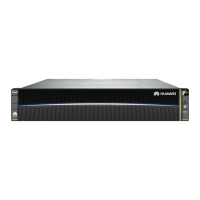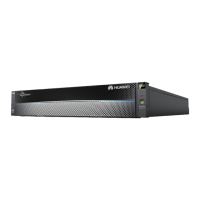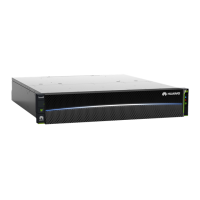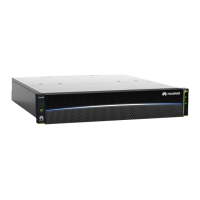Preparation Item Source Value Value
Storage pool owning to Disk domain Service provider DiskDomain000 C3
Storage tier and capacity Service provider
Performance tier
RAID Policy:
RAID 5(4D+1P)
Capacity: 1 TB
Capacity tier
RAID Policy:
RAID 6(4D+2P)
Capacity: 1 TB
Total Storage Pool
Capacity: 2 TB
C4 Multi-choice
□ High-
performance tier
RAID Policy:
Capacity:
□ Performance
tier
RAID Policy:
Capacity:
□ Capacity tier
RAID Policy:
Capacity:
Maintenance Terminal: Creating a File System
File system name Customized FileSystem000 D1
Thin
Service provider Enable D2
Capacity Service provider 200 GB D3
Application Scenario
Service provider
64 KB
D4
Quantity Service provider 1 D5
Owning storage pool Service provider StoragePool000 D6
Maintenance Terminal: Setting CIFS Service Parameters
CIFS Services Service provider Enable E1
Authentication Mode
Service provider Global authentication E2
Performance Settings
Service provider
Notify: Enable
Oplock: Enable
E3
Security Settings
Service provider - E3
After thin provisioning is enabled, the storage system
will dynamically allocate storage resources on demand.
Notify: Notify: After this parameter is enabled, a client's
operations on a directory, such as adding a sub-
directory, adding a new file, modifying the directory,
and modifying a file, can be sensed by other clients
that are accessing this directory or the parent directory
of this directory through automatic display refreshing.
Oplock: a mechanism that improves client access
efficiency. After this mechanism is enabled, files are
buffered locally before being sent to shared storage.
5
Local authentication: Applies to scenarios where a local
authentication user or user group accesses a CIFS
share in a non-domain environment
Domain authentication: Applies to scenarios where a
domain user or user group accesses a CIFS share in
an AD domain.
Global authentication: Local authentication is used first.
If local authentication fails, domain authentication is
used.
Guest: After the guest service is enabled, users can
access shared directories without providing
usernames or password. Besides, users have the
same permission as the Everyone group.

